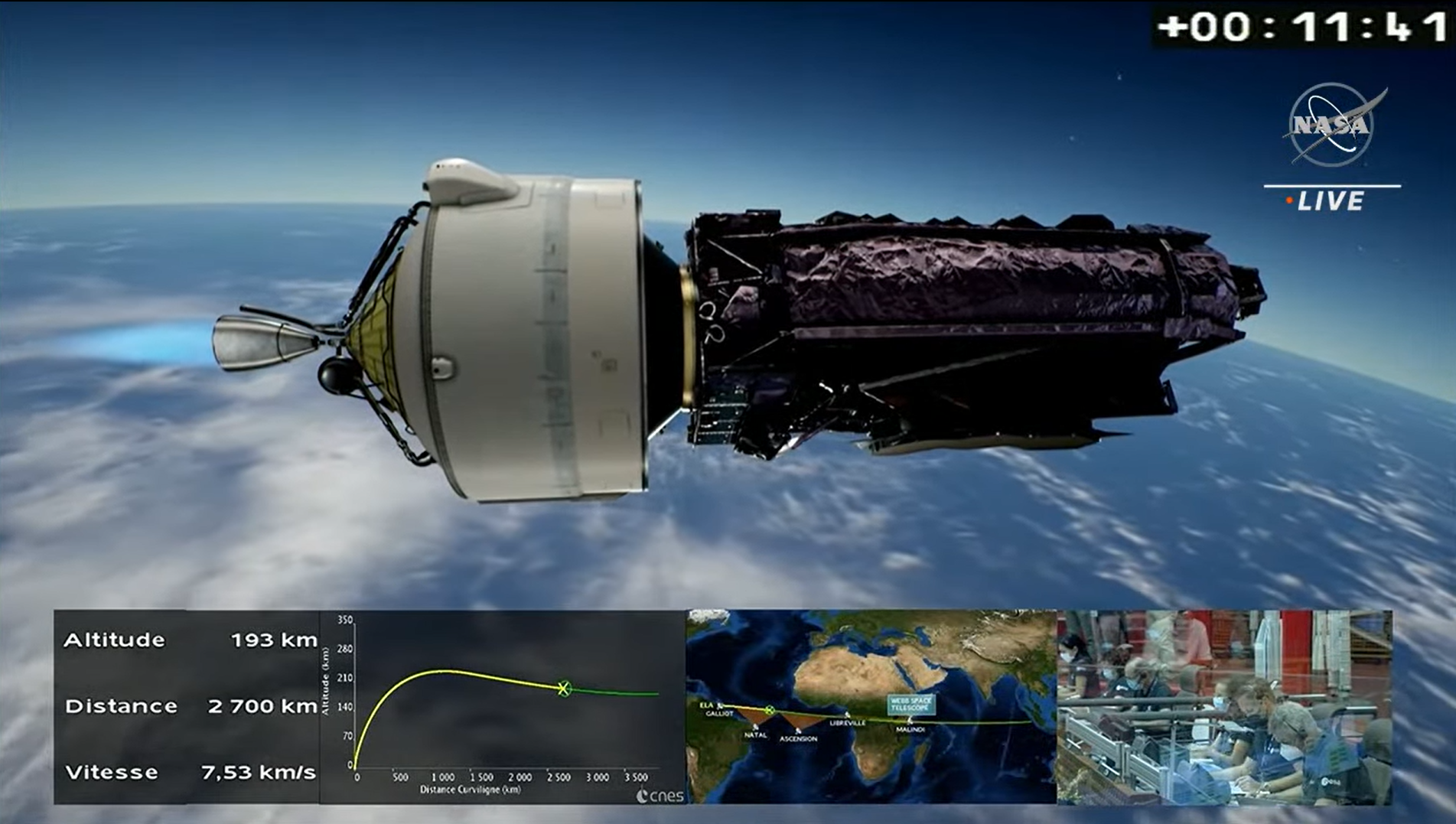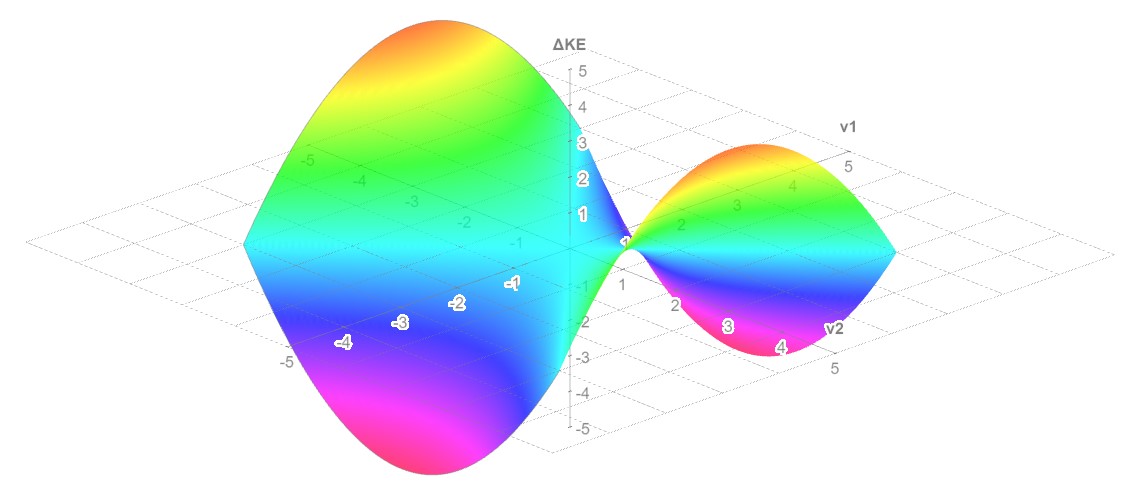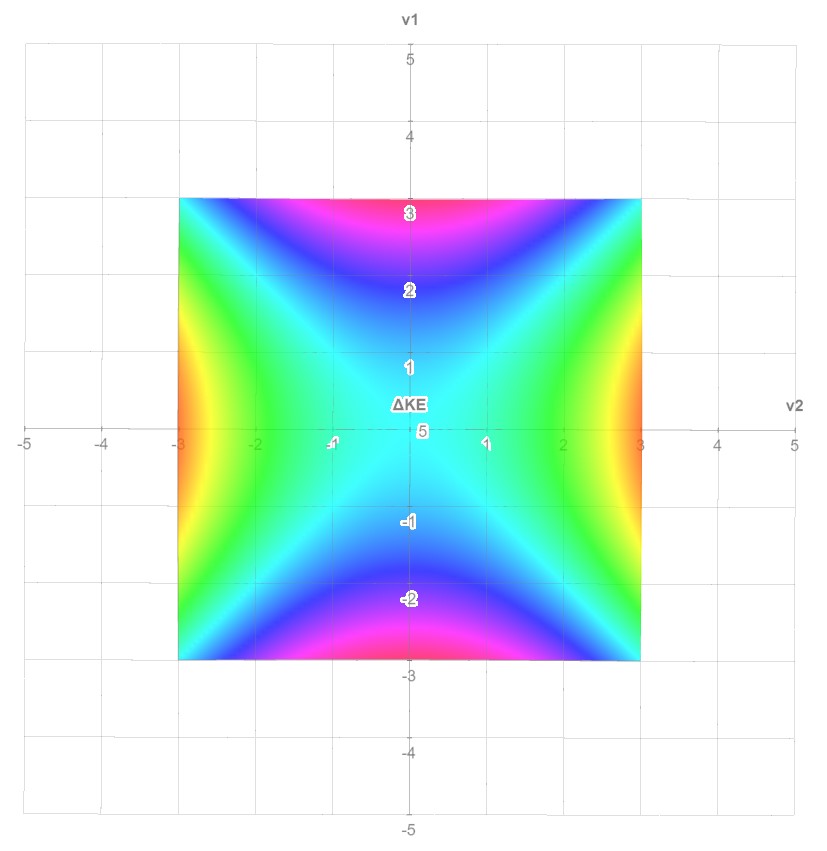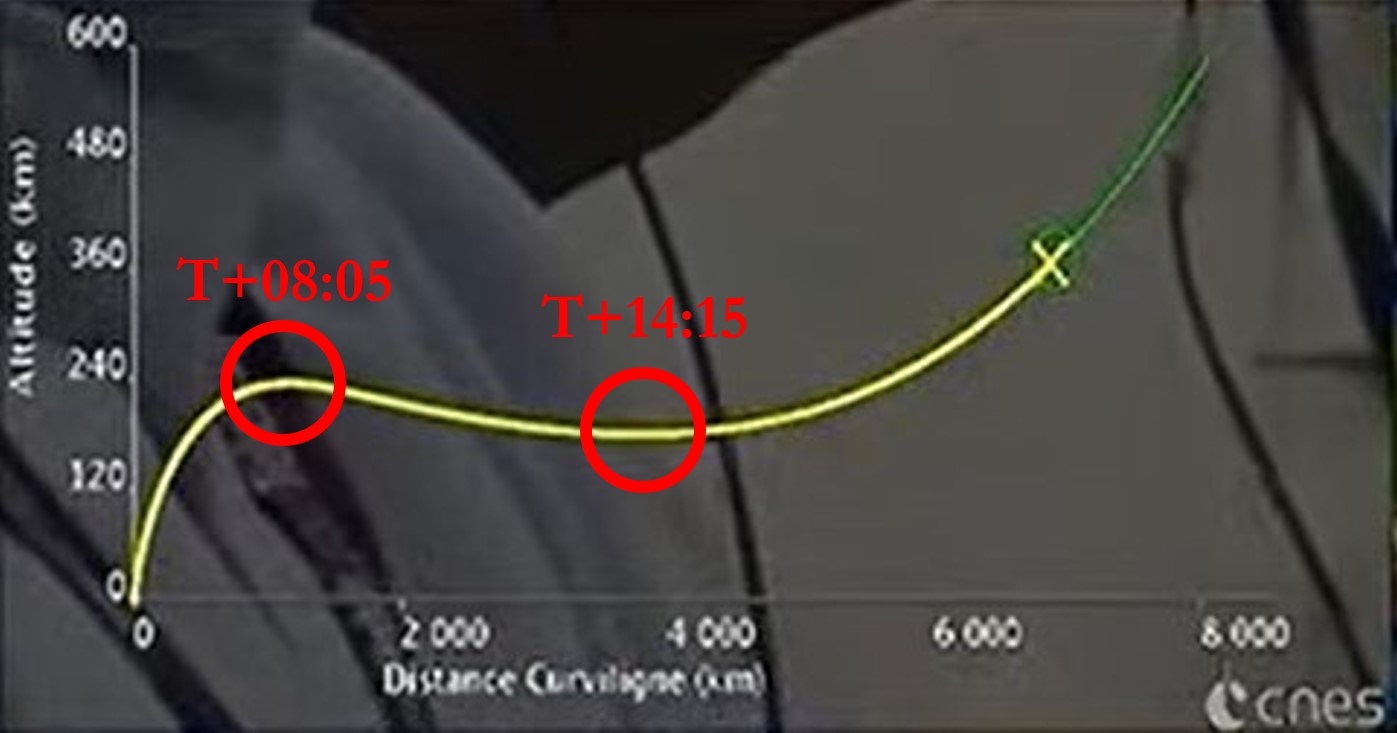The Oberth Effect
Why going down first helps you go higher.

Maths
The Oberth effect maximises the efficiency of a rocket burn by considering the instantaneous kinetic energy of the rocket at particular moments during its flight and selecting the most suitable time to burn. This concept can be understood by analysing the equation for the kinetic energy of a body at a given instantaneous moment.
\[\Delta KE = {1/2} m v^2\]Now, the change in kinetic energy between two instantaneous moments (e.g., from beginning to the end of a burn) can be expressed.
\[\Delta KE = {KE}_2 - {KE}_1\]Also assuming that the change in mass of the craft is negligible (i.e., \({m_1} \approx {m_2} \approx m\))
\[\Delta KE = {1/2} m ( {v_2}^2 - {v_1}^2 )\]Now, taking the value \({1/2} m\) as an arbitrary scalar, the function above can be graphed in 3D as shown below


As illustrated above, for a constant change of velocity (i.e., constant \(\Delta v = v_2 - v_1\) where \(v_2 > v_1\)), the change in kinetic energy is greatest when the individual values of \(v_1\) and \(v_2\) are larger. For example, let the change in velocity be \(\Delta v = 1 {m/s}\) (assume unit mass of 1 kg). If the initial velocity is \(1 {m/s}\) and the final velocity is \(2 {m/s}\), the change in kinetic energy is \(3J\). However, if the initial velocity is \(2 {m/s}\) and the final velocity is \(3 {m/s}\), the change in kinetic energy is \(5J\). This example shows that equal changes in velocity with different starting conditions can produce different changes in kinetic energy (i.e., \(3J\) compared to \(5J\)). That is, a greater change in kinetic energy is possible, using the same change in velocity, when the change in velocity occurs at higher values. In summary, for a fixed amount of rocket fuel (i.e., fixed change in velocity, \(\Delta v\)), a greater change in overall kinetic energy of the rocket can be achieved by beginning the burn at a higher initial velocity.
Example
On 25 December, 2021 at 1:20pm ACDT, the James Webb Space Telescope (JWST) launched from French Guiana aboard the Ariane 5 launch vehicle. However, at about T+08m:04s, the rocket and payload began losing altitude as shown in the altitude vs. distance travelled graph below
